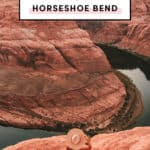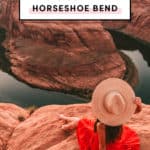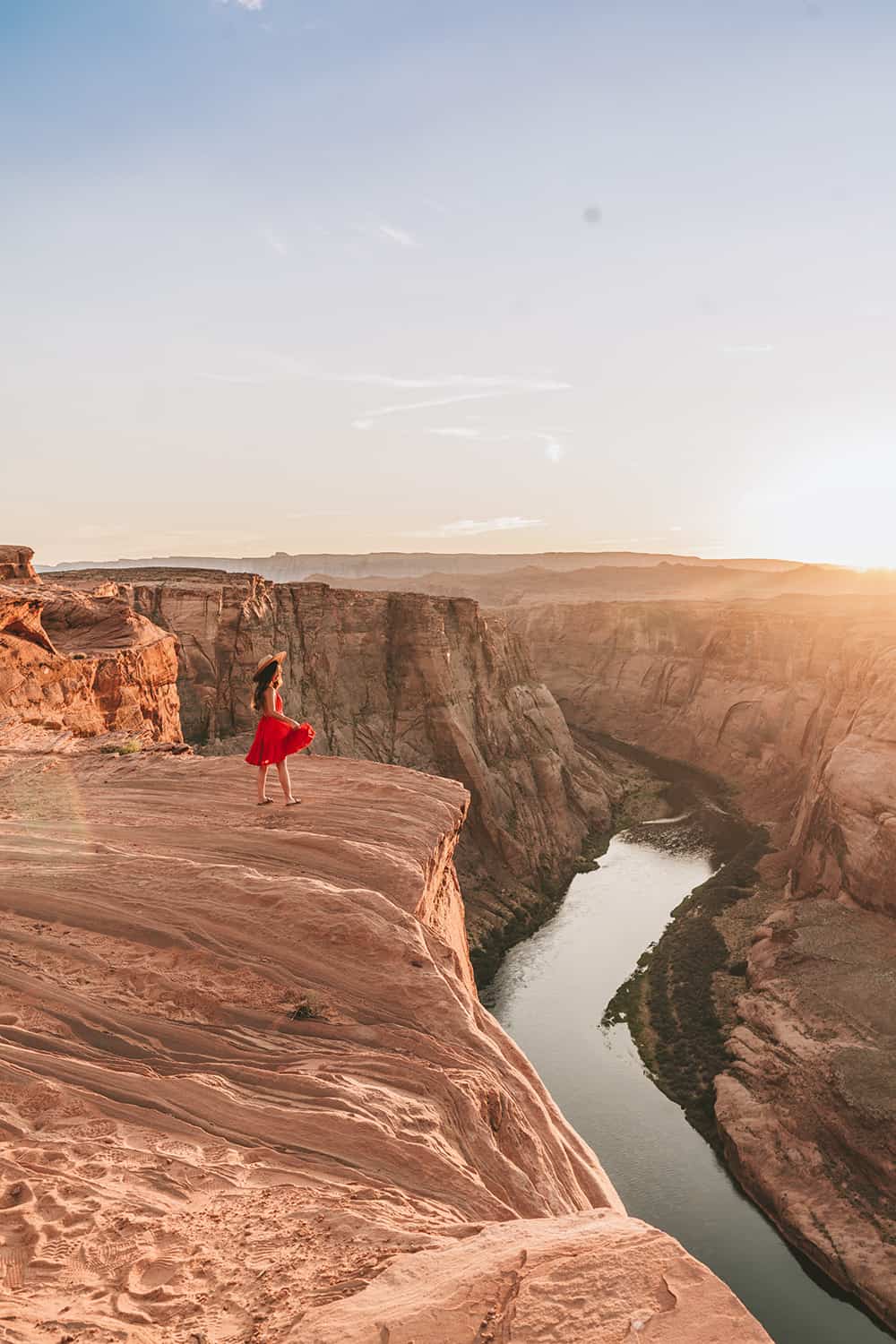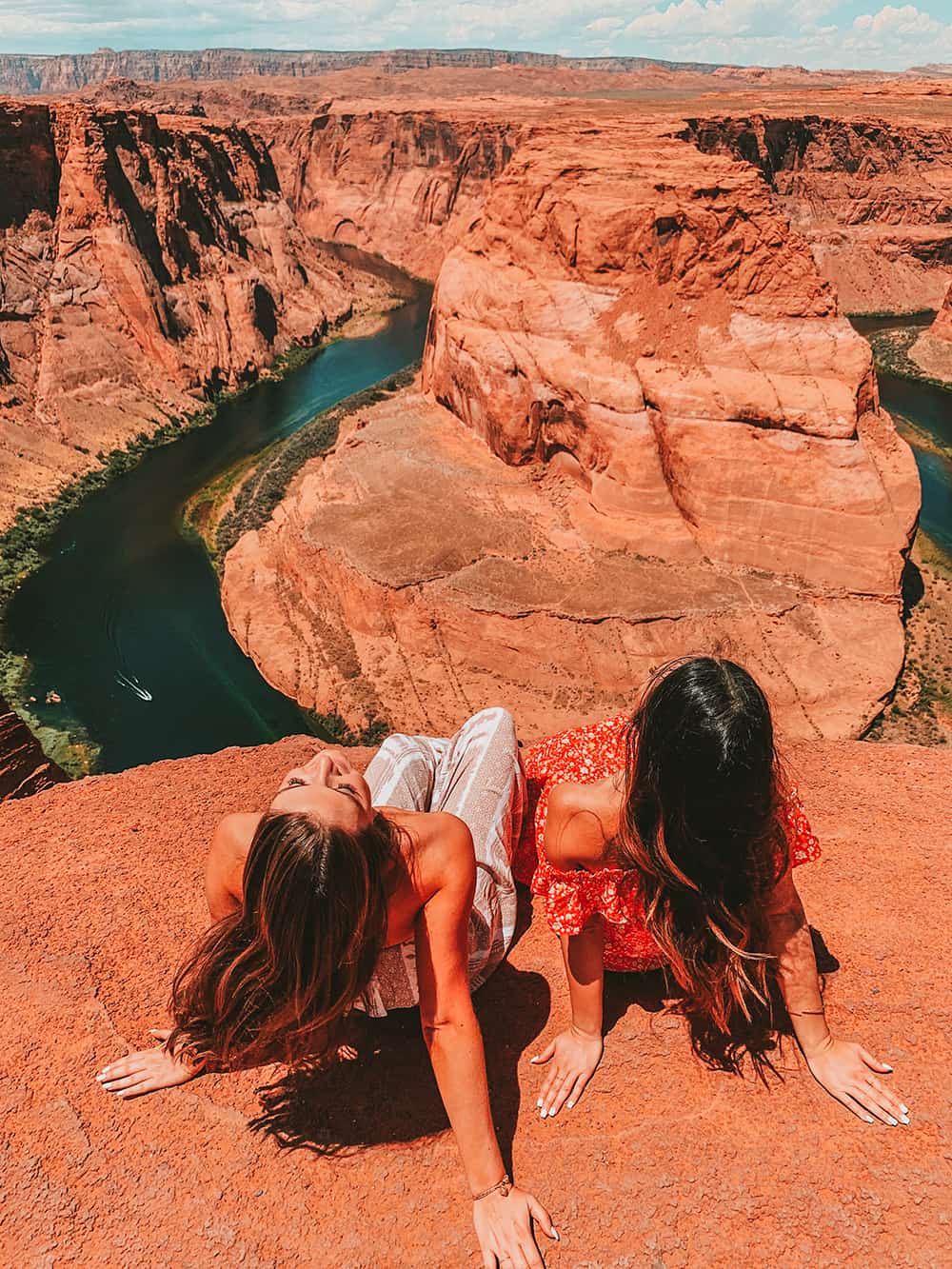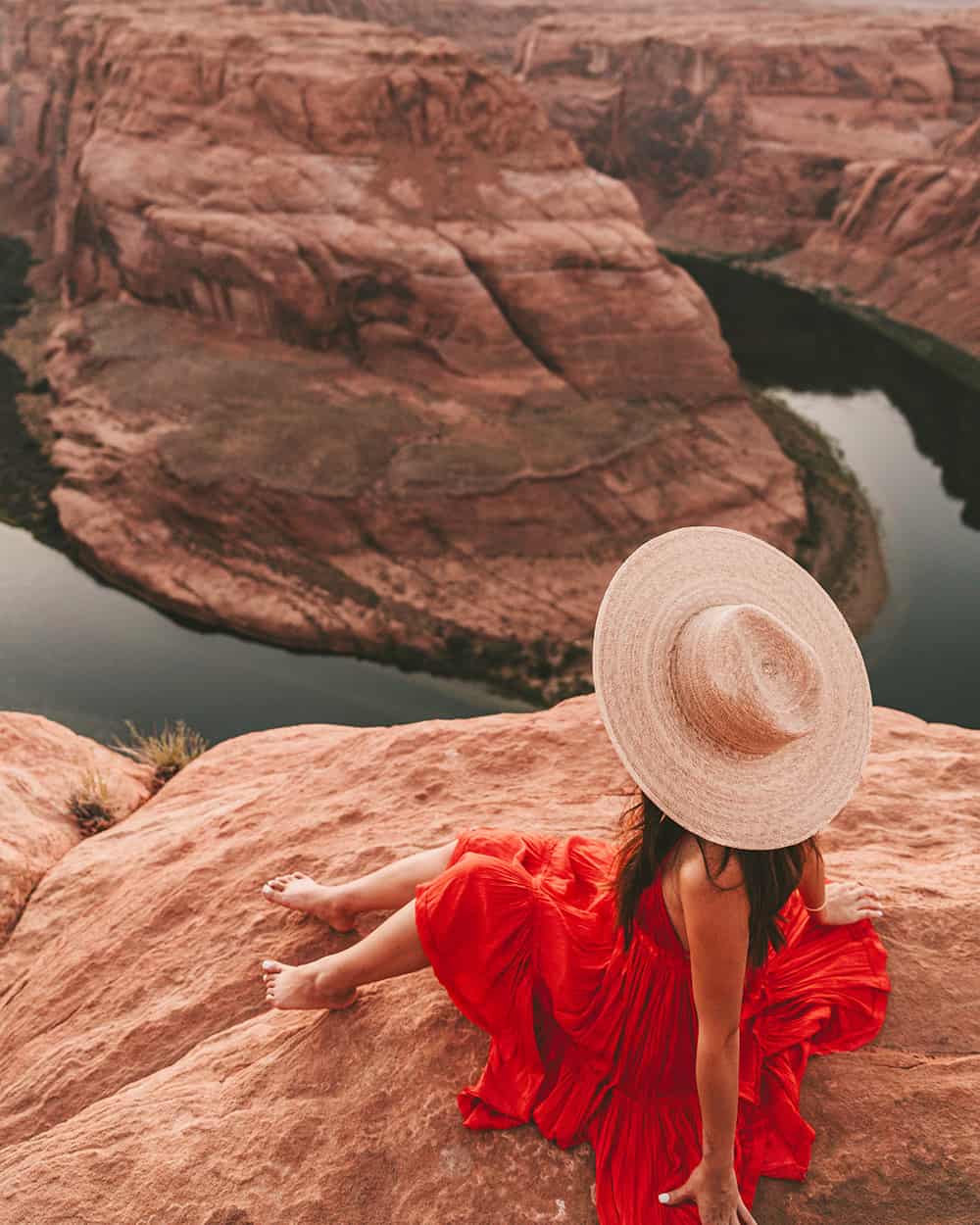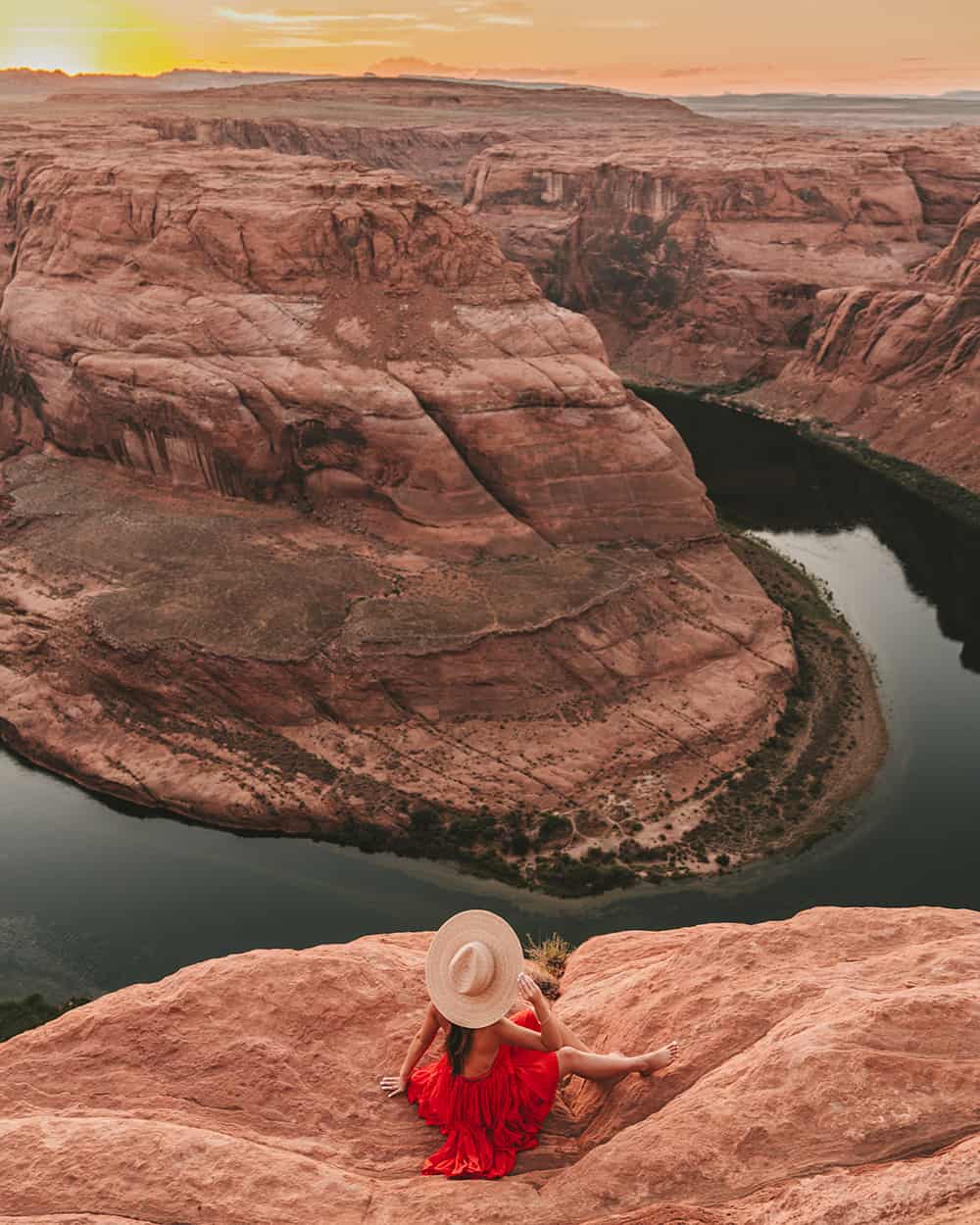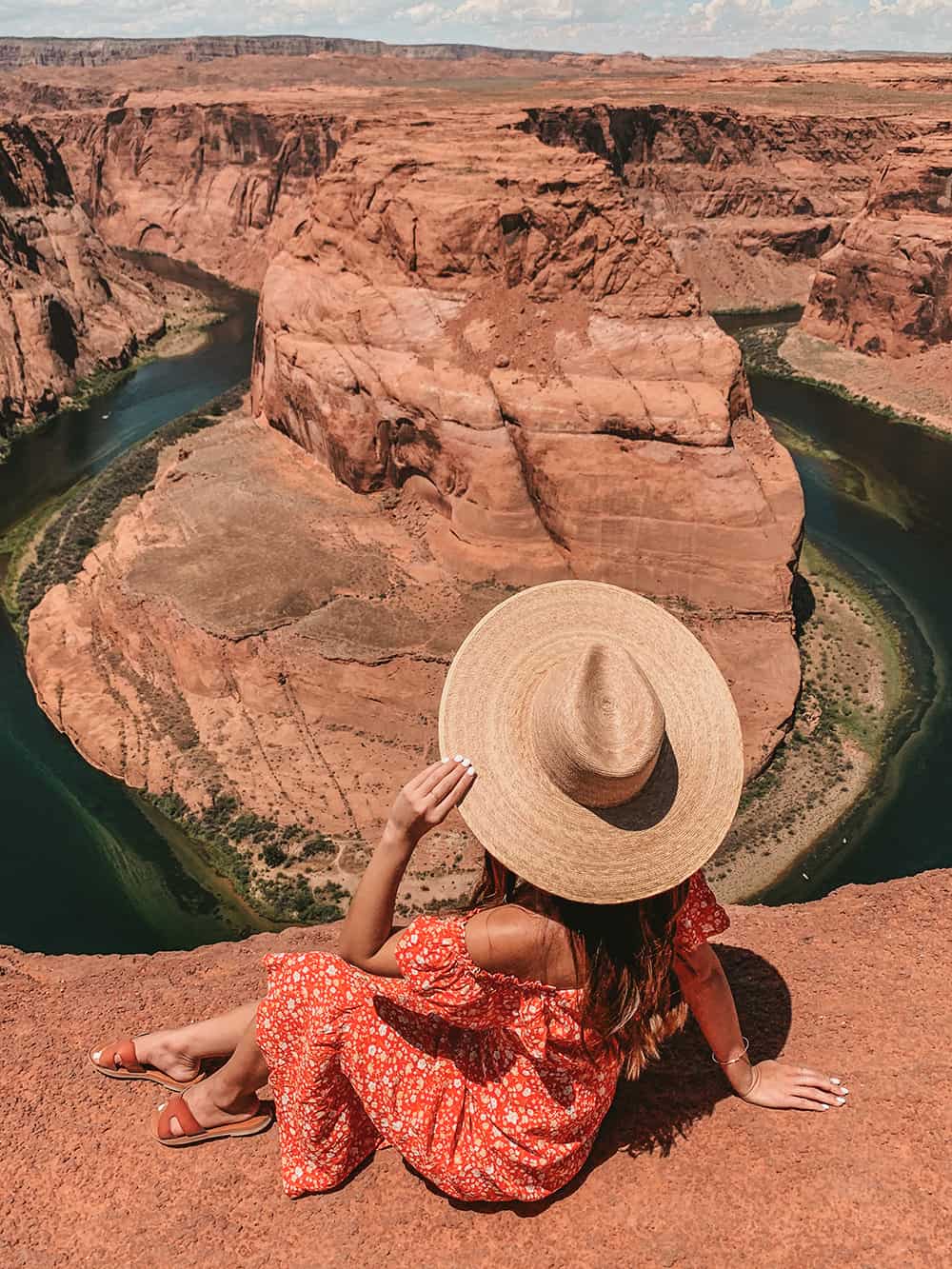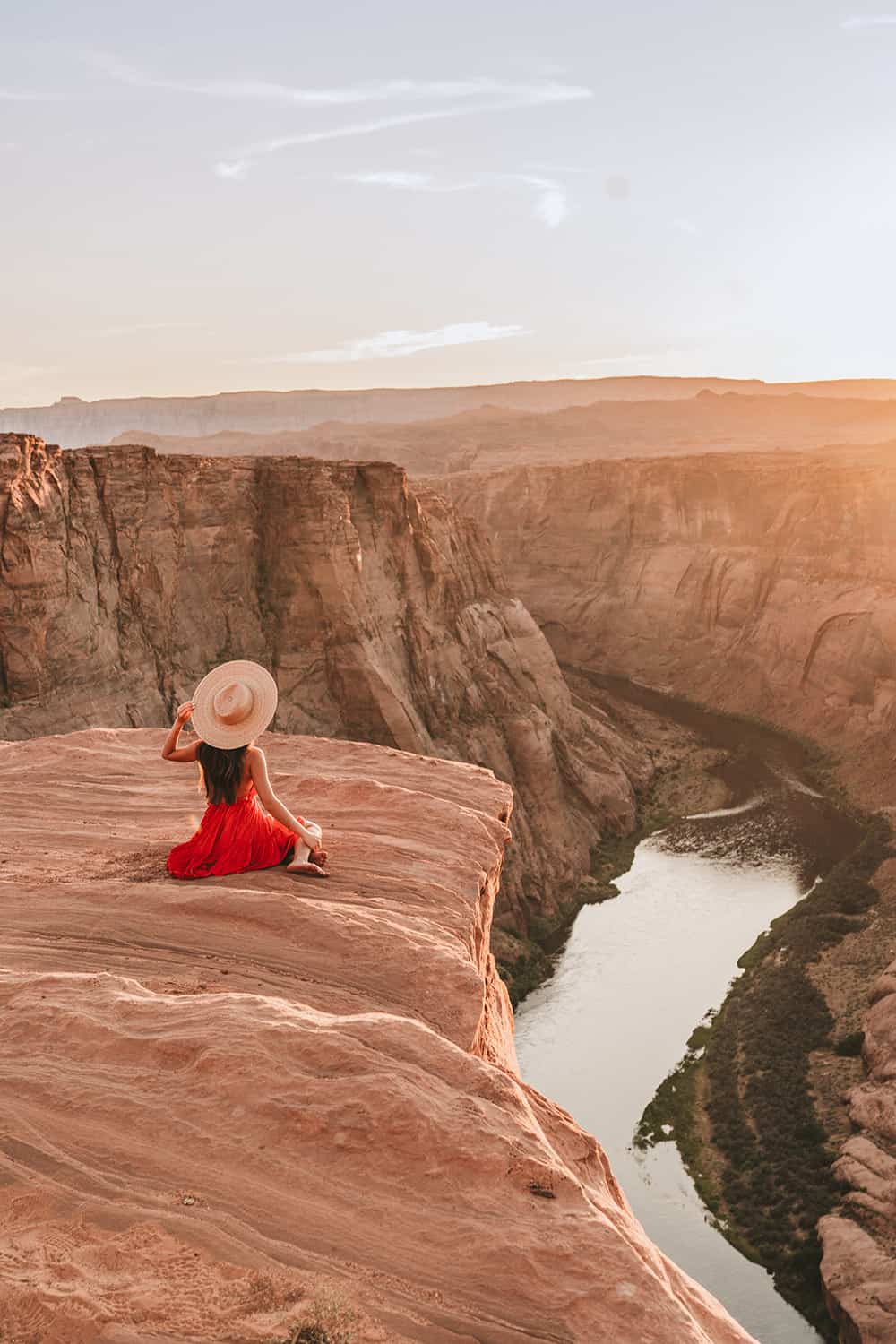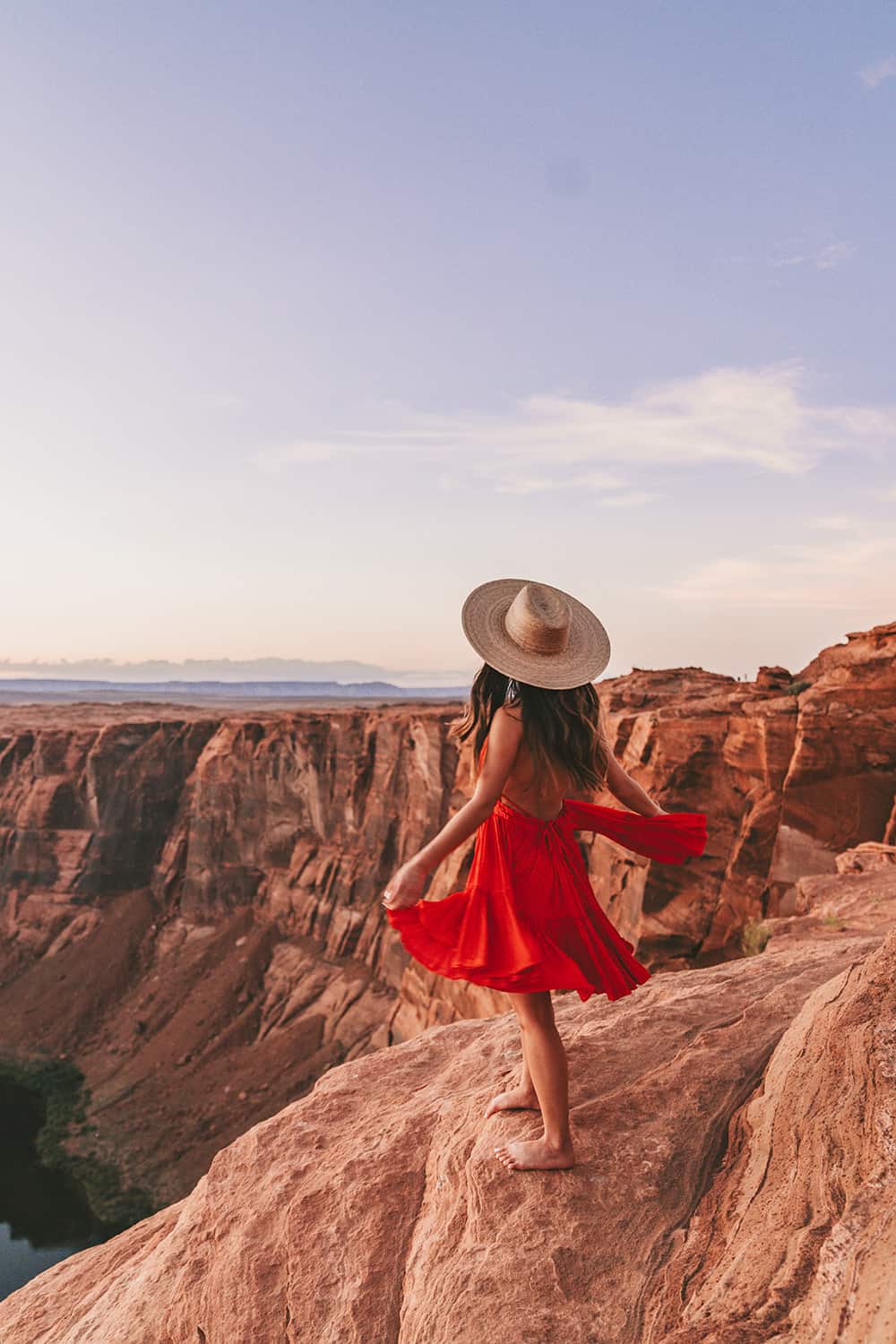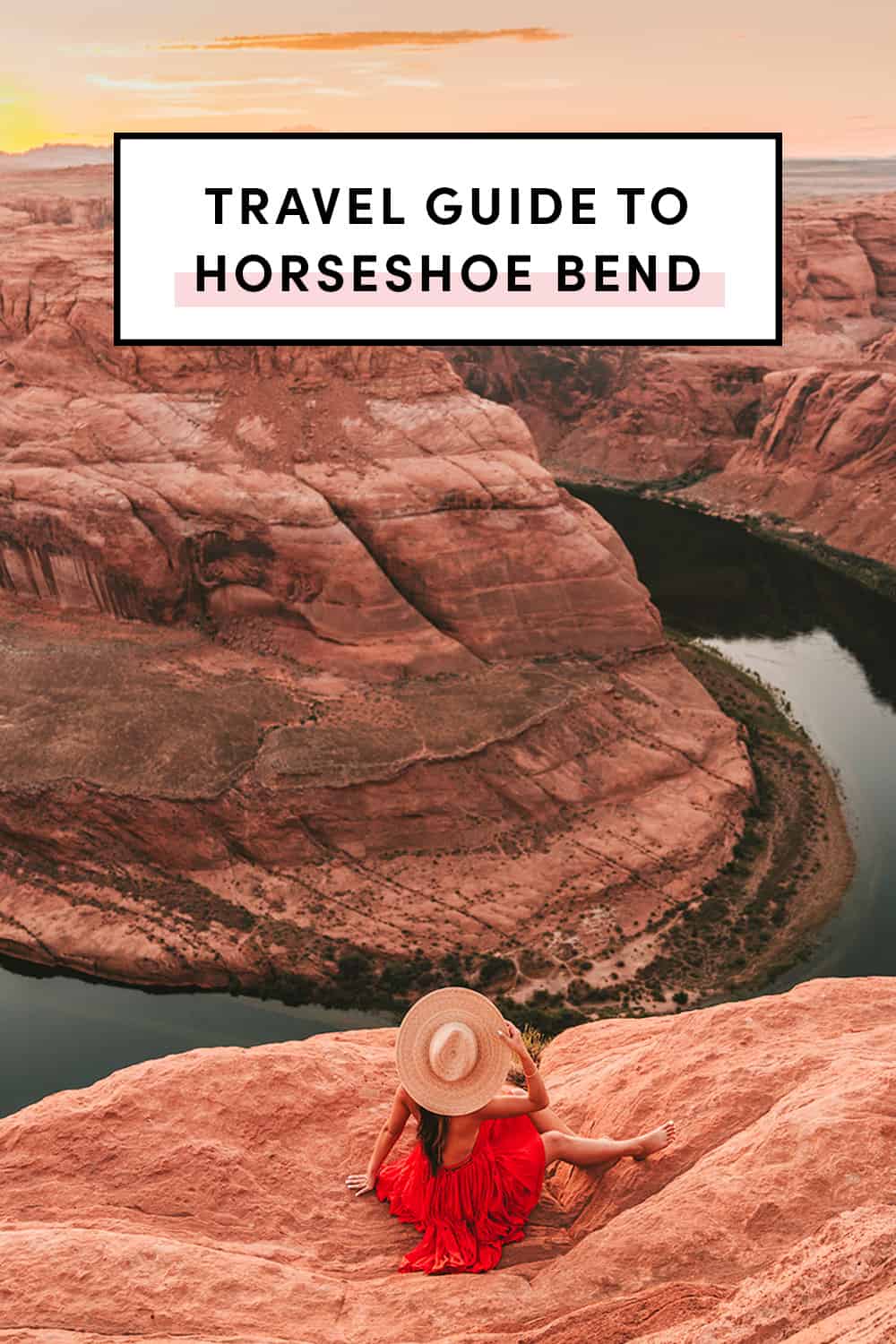
COVID-19 alert: A Taste of Koko is not encouraging any travel right now. This article is meant to serve as a resource for those who are planning future trips. Help donate to the Navajo Nation COVID-19 Fund to help the Navajo Nation respond to the COVID-19 pandemic.
I went to Horseshoe Bend, Arizona last summer for a girl’s trip and was blown away by all the beauty in the desert! We explored Antelope Canyon the first day, and then Horseshoe Bend – twice actually, we went for the sunset and mid-day. Then drove up to Monument Valley, and then back to Flagstaff.
SEE ALSO: Top Things To Do In Scottsdale AZ
With its incredible views and natural beauty, Horseshoe Bend, Arizona is a popular tourist attraction in the American Southwest today for its 270° bend in the Colorado River (called an “incised” or “entrenched meander”). Nature lovers and adventurers come here annually to explore, take photos, and learn more about this part of the United States. Make sure to check the official NPS website for updates. Here are the 9 things you need to know before visiting Horseshoe Bend, Arizona!
Table of Contents
Where is Horseshoe Bend, Arizona?
Address: Mile Marker 545, Highway 89, Page, AZ 86040
The area known as Horseshoe bend was formed approximately 200 million years ago when a gigantic mass of sand dunes covered the landscape ranging from Arizona to Wyoming. These areas are referred to as “ergs” by geologists and over time, the dunes became petrified and turned to stone.
Water and mineral buildup created a solid, uniform layer of sandstone that was over 2,000 feet thick in certain areas. Once the bedrock of this reddish Navajo Sandstone formed, layers of sediment came to rest on top. The layers consist of sandstone, mudstone, calcite, and limestone.
As the mass was exposed to wind and weather, sections of it began to wear away. Now, this mass of Navajo Sandstone is exposed as the top layer is now turned to sand.
The actual spot known as Horseshoe Bend is located near the Colorado River and was formed around 5 million years ago. The Colorado Plateau suddenly uplifted and water from the rivers was trapped down at the bottom of the riverbed.
The Colorado River started to cut through endless layers of rock, and when it ran into Horseshoe Bend, it creates this natural, sculptural landscape. The river eventually went around it, and now there is a 270-degree bend in the river which created the now-famous horseshoe shape. Horseshoe Bend is a meander of the Colorado River.
How to get to Horseshoe Bend?
Horseshoe Bend is located southwest of Page, Arizona which is just off Highway 89.
To get to Page, you can fly into either Phoenix or Las Vegas, which is about a four to five-hour drive from each location. From Austin, we flew into Phoenix and made the four-hour drive up to Page with a pitstop in Sedona.
Travelers coming from Utah will take U.S. route 89 south and turn left (east) onto route 98/89T. Parking will be on your lefthand side in just one-half mile.
Be aware that the roads to Horseshoe Bend are extremely dark at night, so you want to start your journey early in the morning and enjoy the beautiful sunset on your way. It’s also important to note that your cell reception can be spotty in some places, so plan ahead using a map or plot everything on your GPS to avoid getting lost.
When you get to the town of Page, drive south on Highway 89 and look for the exit lane on the west side of the road. The exit will be between mileposts 544 and 545. Once you exit, you should see signs directing you to the parking area. The Horseshoe Bend hike is approximately 1.3 miles round trip in length from the parking lot to the end of the trail (about 0.6 miles each way).
Horseshoe Bend entrance fee
There is a parking fee to enter the parking area of the Horseshoe Bend trailhead. These rates are determined by the city of Page, Arizona and they can be subject to change.
Currently, the cost is $5 for motorcycles and $10 for all other passenger vehicles and you can pay at the visitor center. For commercial vans with a capacity of 14 people or less, the cost of admission is $10. Unfortunately, National Park Service passes do not apply for the parking lot.
Mid-sized commercial and tour buses for groups between 15 and 35 people will cost $70. Full-size buses that hold 35 people or more costs $140. The price of admission for commercial and touring vehicles is determined by the size of the vehicle and not the number of passengers it carries.
It’s a 15-minute short hike from the parking lot to the viewpoint.
SEE ALSO: 14 Best Hiking Trails In Austin TX
Best time of year to visit
There’s not really a best time to visit Horseshoe Bend unless you prefer the cooler air, then autumn, and early spring are ideal. For sun bums, summertime is obviously a better choice but remember that this is peak tourist season.
In terms of which time of day you should visit, it really depends on your personal schedule. Both sunrise and sunset are gorgeous times to visit and you can get some pretty darn impressive pictures.
Some visitors advise staying away from Horsehoe Bend during the midday hours. Not only will the sun be at its peak, but it could also make your photos appear washed out, and you won’t be able to capture all of the brilliant colors.
If you’re planning to do some winter skiing in the area, you can visit Horseshoe Bend but the roads and trails can be tricky. Snowy conditions can happen any time and you might end up getting stuck or unable to access the overlook.
photo shot at sunset
photo shot mid-day
Best time to shoot photos
The Horseshoe Bend Overlook faces due West which means the pre-sunrise and post-sunset hours give amazing views of the Colorado River below. However, you may end up getting stuck with shadowy views depending on the season. Daytime will allow you to view this natural wonder in all its beauty, but the brightness might be too much for your camera to capture every detail.
Many visitors like to stop at the famous overlook on their way to the Grand Canyon’s South Rim. Since this area is a scenic overlook, you can easily make it a quick pit stop on your way to or from the Grand Canyon and other attractions.
SEE ALSO: 10 Best Swimming Holes in Austin
Horseshoe Bend Tours
We booked the Horseshoe Bend Overlook Tour during sunset time from Horseshoebendtours.com – the website currently says $59 but we paid $98 per person during the summer. If you’re wanting photos without the crazy crowds, this tour is the way to do it. Full disclosure, we paid for this tour and this company doesn’t know I’m including them in this post.
Our tour guide took us in a jeep onto a private dirt road to 100 meters of the edge of the canyon. It was quite frightening to stand on the steep cliff edge of a 1000 foot drop.
Where to Stay Near Horseshoe Bend
There are plenty of places to stay within the Page area as well as near Antelope Canyon and the Grand Canyon. Where you stay really depends on who is with you and your budget. It may also depend on what you’re planning to do for the rest of your trip.
You’ll find everything from family-friendly hotels to luxury resorts throughout the surrounding areas of Horseshoe Bend, Arizona. If you’re planning a long trip, make sure you book your hotel stay well in advance since many locations can be fully booked, particularly during the summer.
If you want to stay in Page, check out the Hyatt Place Page Lake Powell hotel. This luxurious, modern hotel is just seven short miles from Lake Powell and offers a lot of high-end amenities and a gorgeous view from many of its balcony suites.
Camping near Horseshoe Bend
If you want to camp, there are a couple of campgrounds:
- Waheap campground – 112 dry camping sites and 90 campsites with hookups and campsites start at $30 per night and have showers, WiFi, and laundry facilities. Reservations are accepted.
- Page Lake Powell – RV park with modern amenities and cost around $45/night.
- Lee’s Ferry campground – 54 campsites all operated under a first-come, first-serve basis. Cost is $20 and there are flush toilets and an RV dump station but there are no showers and no advance reservations allowed.
What to pack?
From the parking lot, it’s a one-mile walk but in the heat, it’s a very long one-mile walk so you’ll want to wear tennis shoes, a hat, sunglasses, sunscreen, and lots of water.
Other things to do around Horseshoe Bend
- Upper Antelope Canyon – located just a few miles from Horseshoe Bend, Antelope Canyon’s awe-inspiring colors, slot canyons, and swirling landscapes is a photo opportunity you can’t miss. You can tour both the upper and lower Antelope Canyon via guided tours and boat tours.
- Glen Canyon Dam – located in the Glen Canyon National Recreation Area, this concrete arch-gravity dam on the Colorado River is a sight to see
- Lake Powell – enjoy a day of boating, fishing, or relaxing by the shore
- John Wesley Powell Memorial Museum – learn about the history of the area
- Grand Canyon National Park – also located very close to Horseshoe Bend is Grand Canyon. I wish we could have extended our stay by a couple of days so we could stay and explore the Grand Canyon.
- Rainbow Bridge
- North Rim
- Helicopter tour
- 7-Day Road Trip To Utah National Parks – you could do a day trip to Zion National Park
